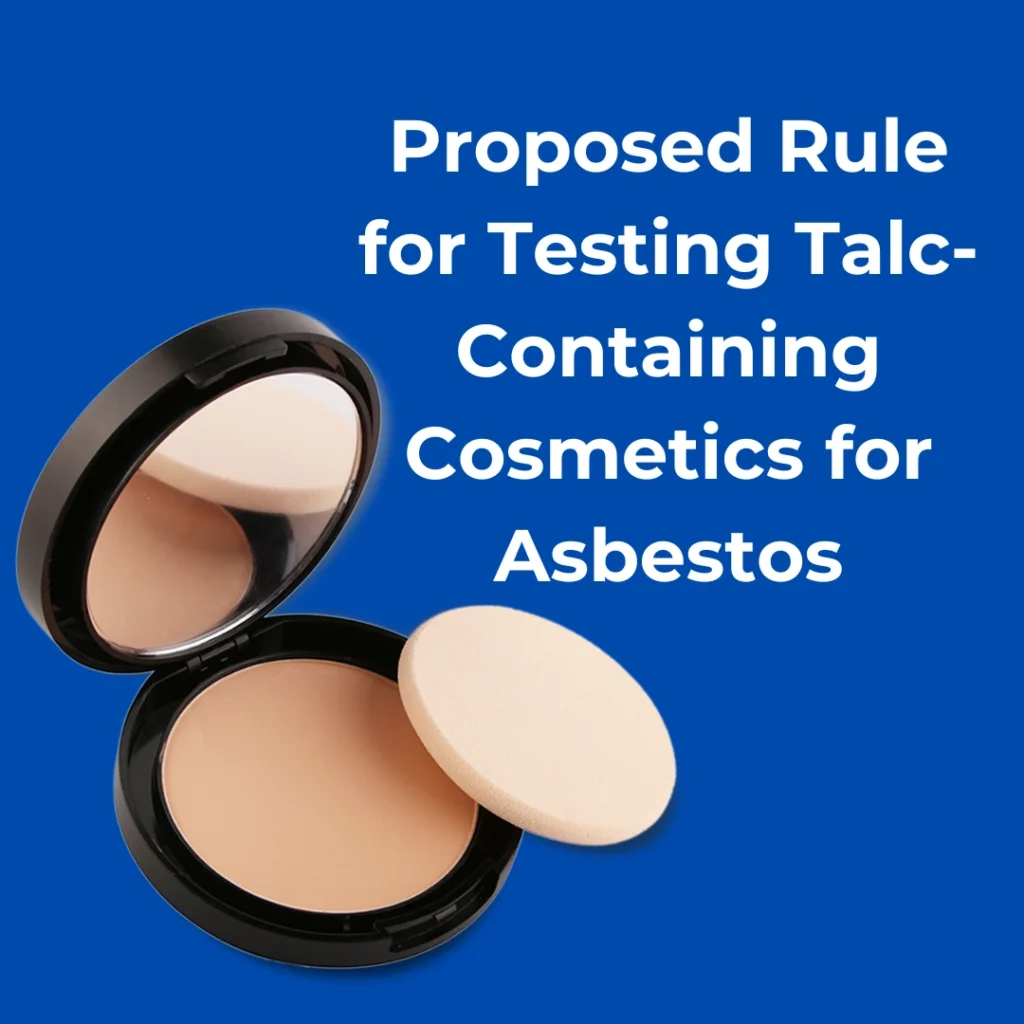Recently, the Food and Drug Administration (FDA) has come up with a proposed rule for testing talc-containing cosmetics for asbestos. This new rule would involve a standardized approach to testing cosmetic products for potential asbestos. If the proposal was put into practice, each batch of cosmetic products that contain talc would be tested through microscopy techniques. If this rule is adopted, it could be promising for the future of the cosmetics industry when it comes to making sure that consumers are safe.

No Safe Level of Asbestos Exposure
The FDA has held strongly on the fact that there is no safe level of asbestos exposure. Although it is thought that longer and more intense levels of exposure to asbestos are more likely to cause an asbestos-related disease, any amount of asbestos exposure is hazardous. Asbestos is a carcinogen, known to cause multiple types of cancer, including but not limited to mesothelioma and lung cancer. Exposure to asbestos can also cause non-cancerous asbestos-related diseases, such as lung cancer.
Many cosmetic products, particularly powder-based products, contain talc in them. Although talc is not dangerous itself to exist in these products, talc exists in the ground very close to asbestos. When talc is mined there are instances when asbestos can be accidentally mined along with the talc. This proposed rule for testing talc-containing cosmetics for asbestos could hold manufacturers accountable for keeping consumers safe and not putting them at risk of exposure.
Mesothelioma’s Latency Period
Mesothelioma, along with other asbestos-related diseases, is known to have a latency period when it comes to the development of the disease. For instance, in many circumstances, those who were previously exposed to asbestos do not start developing symptoms until decades after exposure to the carcinogen. It can be difficult for people to track back their sources of exposure when so much time has passed. Working with an experienced legal team can help mesothelioma victims to determine all possible sources of asbestos exposure, including in makeup products.
FDA’s Proposed Rule for Testing Talc-Containing Cosmetics for Asbestos
Under the proposed rule, the testing of the products would include Polarized Light Microscopy and Transmission Electron Microscopy/Energy Dispersive Spectroscopy/Selected Area Electron Diffraction. These methods would be used to find any potential asbestos in cosmetic products.
Furthermore, in circumstances where asbestos is found in the product, the product is adulterated under the FDA’s FD&C (Federal Food, Drug, & Cosmetics) Act.
If you or a loved one has been diagnosed with mesothelioma, or another asbestos-related disease, and believe you may have been exposed to asbestos through talc-containing cosmetic products, we can help. We have multiple resources, including a booklet containing everything you need to know about talc and asbestos. We help Pennsylvania mesothelioma victims and their families file claims, and we have the knowledge and experience to get you your rightful compensation. For more information, call us at (800) 505-6000, fill out our contact form, or utilize our chat feature.
Sources: